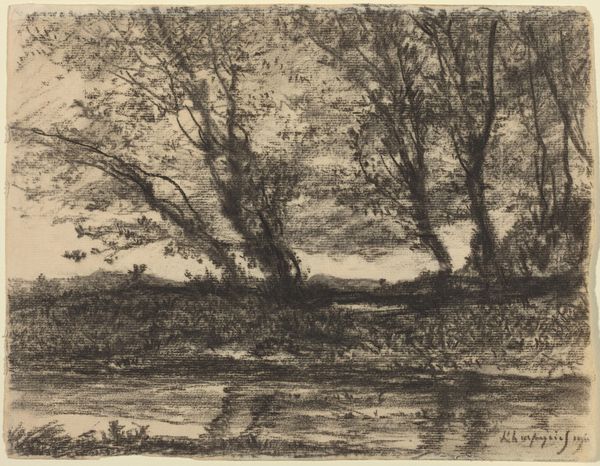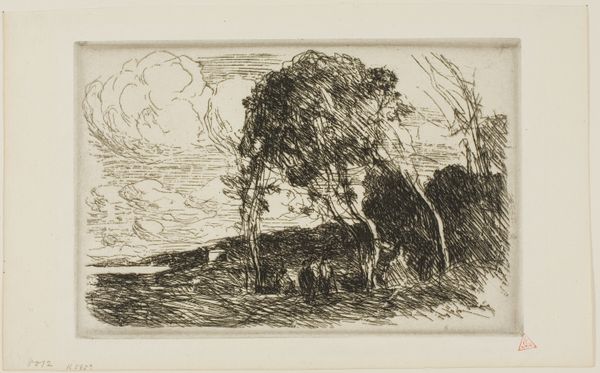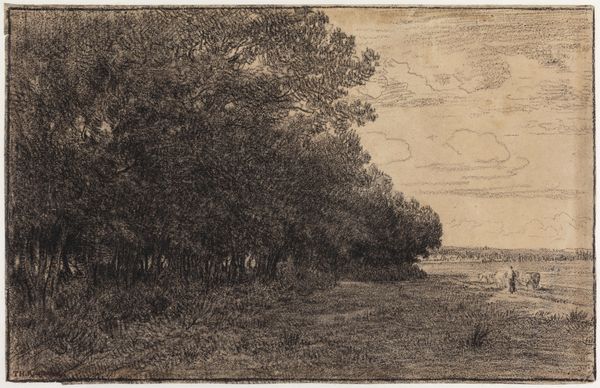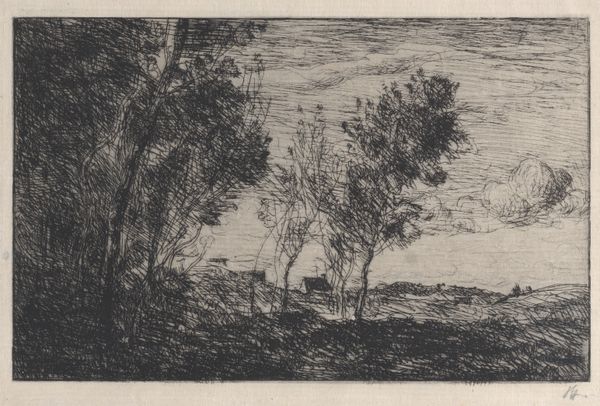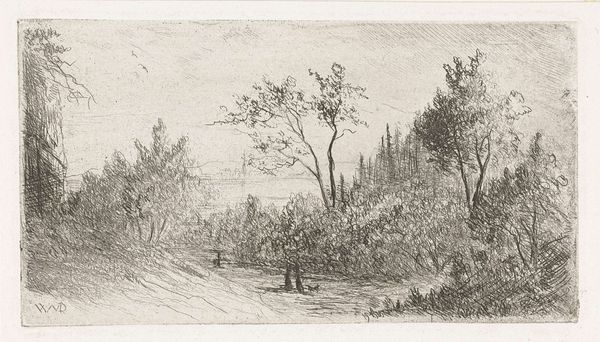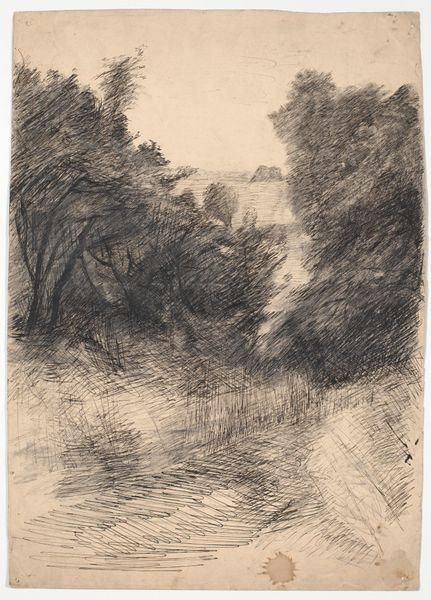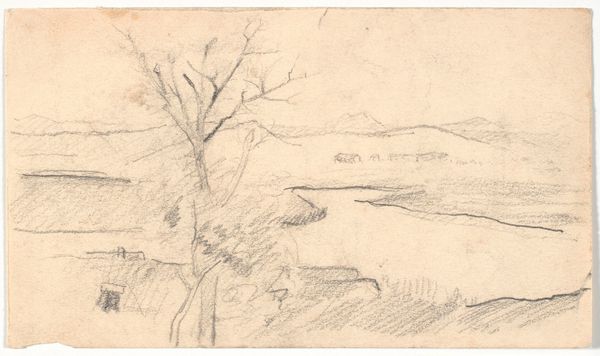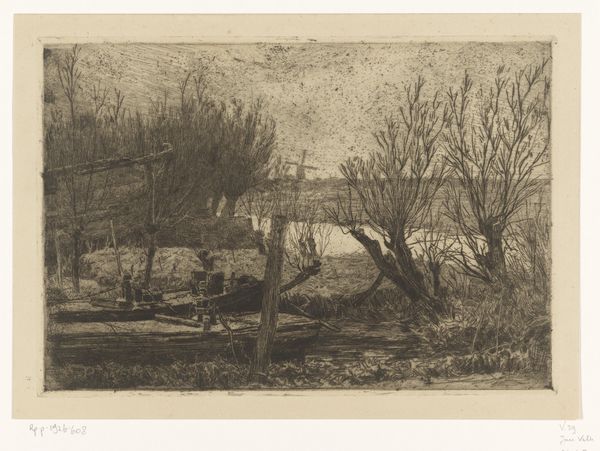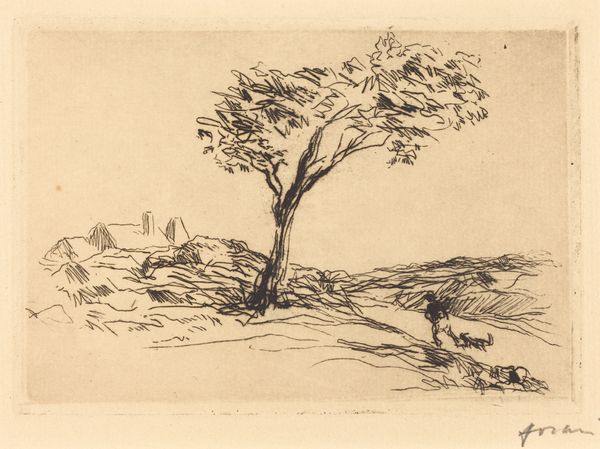
Dimensions: 15 1/4 x 21 1/16 in. (38.7 x 53.5 cm)
Copyright: Public Domain
Editor: So, we're looking at Henri-Joseph Harpignies's "Le Cap Martin," a graphite drawing from 1910 currently housed at the Metropolitan Museum of Art. It has such a calm, almost melancholic, feel to it. What can you tell us about this landscape in terms of its historical context? Curator: Harpignies' work speaks to a very interesting period in the development of landscape art and its relationship to emerging ideas about nature and national identity. We see, even into the early 20th century, a continuation of the Barbizon school’s influence. What was once a revolutionary plein-air approach has become academic by 1910. Editor: Academic how? Curator: Academic in the sense that artists like Harpignies, though skilled and celebrated, found themselves painting landscapes that catered to established tastes rather than challenging them. There's a real sense here of nature being tamed and made palatable for a bourgeois audience eager to possess imagery associated with national pride. Does that make sense? Editor: Yes, it does. The “tameness” is so clear. Are you saying that the Impressionist brushstrokes are then more about meeting expectations of the market, rather than responding to actual sensory experience? Curator: Precisely. He offers a consumable, romanticized version of nature – reinforcing existing societal hierarchies through idealized depictions of land. And who was buying these images? The burgeoning middle class, asserting its status and cultivating its identity through art ownership. Editor: So, it’s landscape as a form of social capital. I never really considered that before! Curator: Exactly! Looking closely can tell us a lot about the cultural forces at play during Harpignies’s time, which might be the key to looking at art. Editor: I will definitely look differently from now on. Thanks!
Comments
No comments
Be the first to comment and join the conversation on the ultimate creative platform.
